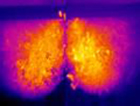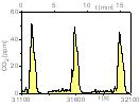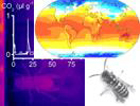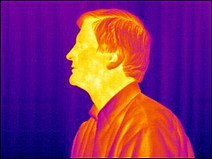Research

Eco-Physiology & Eco-Ethology with Anton Stabentheiner - here to be seen as adapted to the local Styrian Environment - at the Institute of Biology, Division of Zoology, University of Graz / Austria
My main research interest is the ecological physiology of insects.

I am interested in the thermal biology, energetics and respiration of insects in a variable world, and in the interrelation with behavior. The investigations provide basic physiological knowledge to understand survival strategies of insects in a variable environment. Experiments cover the environmental physiology and behavioral ecology of honeybees, wasps, beetles, bugs, grasshoppers, and ants.
In detail, I am working on the following (main) topics
(together with my coworkers):
Thermobiology:

A main research field is the thermal behaviour of individual insects as well as the social thermoregulation in the honeybee colony and in wasp societies. These investigations aim at a better understanding of the regulatory mechanisms of individual and colonial thermoregulation. The method of infrared thermography enables us to measure the body temperature of insects without impairment and without disturbance of their behaviour.
Energetics of insects:

For an energetic view on foraging efficiency we perform ecophysiological investigations of foraging bees and wasps in the field, including measurement of body temperature, respiration and environmental parameters at the microclimatological level. The aim of these studies is to understand the energetic optimization strategies of insects during foraging, and to develop a heat exchange model of foraging heterothermic insects like bees and wasps.
Respiratory physiology:

A further field of research is the comparative respiration physiology of insects. We investigate the temperature dependent mechanisms of insect gas exchange both in the resting and in the active state. Measured quantities are CO2 production and O2 consumption.
Insects and Global Change:

Climate change is one of the main challenges of mankind. However, it is also a great challenge for insect survival. We compare the energetic requirements and the thermal limits of native and invasive insect species with the microclimatological situation in their habitats. This field of research is of special interest for the assessment of fitness and survival of insects in a changing environment due to global warming.
Floral biology of Aroid plants:

The Arum lily (Arum maculatum L.) is a typical gliding trap inflorescence ("Gleitfallenblume"). The spadix of the inflorescence consists of separate male and female flowers at the base and a sterile club at the tip - the appendix. During flowering the spathe (a bract or enveloping leaf) unfolds in its upper part and exposes the appendix, whereas the lower part, forming the floral chamber (basal bulb) with the male and female flower parts, remains closed to trap small insects. The appendix and parts of the sexual organs heat up via combustion of starch, to improve 'odour' vaporisation, which attracts the insects. We (Edith and Anton Stabentheiner) compare the (thermal) characteristics and temporal patterns of flowering phases of different Aroid plants.
 Institute of Biology
Institute of Biology